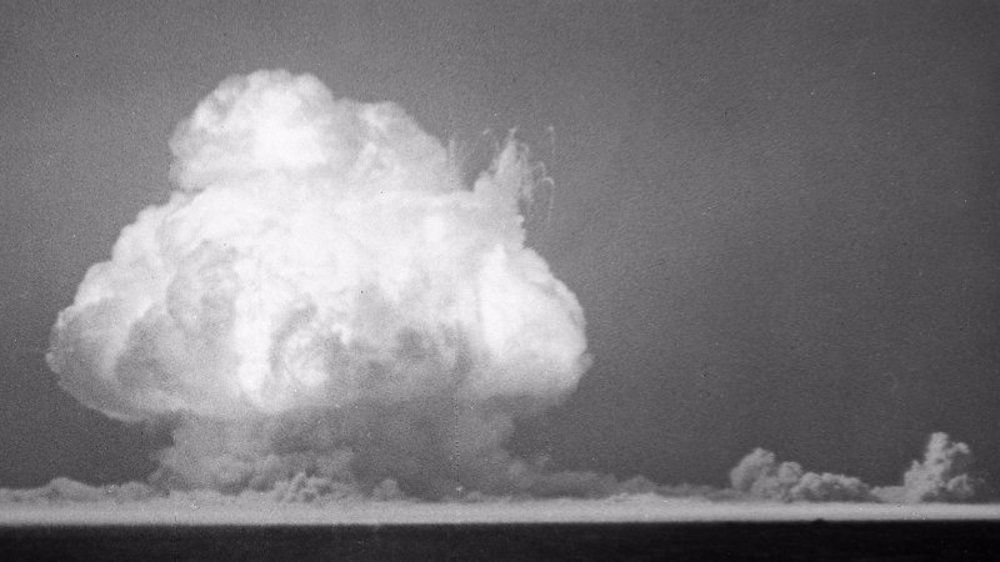By: Jy Hung Ong
In July 1945, Oppenheimer and a few other scientists had no idea how the Trinity bomb test would behave. Trinity, as it was codenamed, was a test of the world’s first atomic bomb. The resultant mushroom cloud was much higher than expected, going about 50,000 to 70,000 feet more than intended.
Recently, a study on Thursday found that the mushroom cloud and the following fallout was much more powerful than anyone in the Manhattan Project, the project which created Trinity, had ever imagined. Using modeling software and historical weather data, the study showed the fallout of the Trinity Test reached 46 states as well as Canada and Mexico after the first ten days of the initial explosion.
“They were aware that there were radioactive hazards, but they were thinking about acute risk in the areas around the immediate detonation site. They were not really thinking about effects of low doses on large populations, which is exactly what the fallout problem is,” said Alex Wellerstein, a historian not related to the study.
The study was quite difficult to do. In the decades after the Trinity test, the continuous problem — a lack of data — made it quite hard to study Trinity’s fallout. Back in 1945, the United States had nothing available to track the fallout. Important historical weather and atmospheric data was only available after 1948. The nuclear tests in Nevada — which started in 1951 — were easier to analyze and recreate, but Trinity was still quite stubborn and refused to be easily analyzed.
Fortunately, a breakthrough occurred when Susan Alzner and Megan Smith, both co-founders of shift7, an organization which helped the study’s research, notified the National Oceanic and Atmospheric Administration. At the administration, Gilbert P. Compo told the team that the European Centre for Medium-Range Weather Forecasts had recently released historical data able to find weather patterns that extended more than 30,000 feet from the surface of the Earth.
“For the first time, we had the most accurate hourly reconstruction of the weather back to 1940, around the world. Every single event that puts something in the air, no matter what it is, can now be tracked, by the hour,” said Dr. Compo.
In an article for the New York Times, Lesley M. M. Blume wrote, “The results show that New Mexico was heavily affected by Trinity’s fallout. Computations by Dr. Philippe and his colleagues show the cloud’s trajectory primarily spreading up over northeast New Mexico and a part of the cloud circling to the south and west of ground zero over the next few days.”
“Downwinders”, or the people who lived “downwind” of the nuclear areas, often have a wide array of severe health problems, including heart disease to leukemia due to living so close to the nuke sites. The United States government allows people who have been exposed to the radiation of nuclear bombs to receive compensation due to the 1990 Radiation Exposure and Compensation Act (RECA). However, the people of New Mexico, for some reason, never received compensation or even recognition.
“Despite the Trinity test taking place in New Mexico, many New Mexicans were left out of the original [nuclear fallout] legislation and nobody has ever been able to explain why,” Senator Ben Ray Luján of New Mexico told the Times.
The people living closest to the 150-mile radius around the Trinity site were at the largest risk of severe health problems. There were even some people living as close as 12 miles, according to the Tularosa Basin Downwinders Consortium. However, no one was asked to evacuate before or after the test.
“This new information about the Trinity bomb is monumental and a long time coming. We’ve been waiting for an affirmation of the histories told by generations of people from Tularosa who witnessed the Trinity bomb and talked about how the ash fell from the sky for days afterward,” Tina Cordova, a co-founder of the consortium, said.
Sources:
https://www.nytimes.com/2023/07/20/science/trinity-nuclear-test-atomic-bomb-oppenheimer.html











